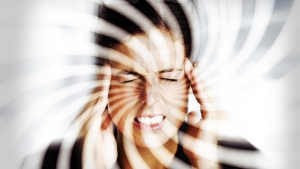
Vertigo
Vertigo is a sensation of feeling off balance. If you have these dizzy spells, you might feel like you are spinning or that the world around you is spinning.
People with vertigo typically describe it as feeling like they are:
- Spinning
- Tilting
- Swaying
- Unbalanced
- Pulled to one direction
Other symptoms that may accompany vertigo include:
- Feeling nauseated
- Vomiting
- Abnormal or jerking eye movements (nystagmus)
- Headache
- Sweating
- Ringing in the ears or hearing loss
Symptoms can last a few minutes to a few hours or more and may come and go.
Common Vertigo Causes
Benign Paroxysmal Positional Vertigo
Meniere’s Disease
Neck dizziness (cervicogenic dizziness)
- Your Content Goes Here
Vestibular migraine
Vestibular neuritis/ Labyrinthitis
Acoustic Neuroma
What Causes Common Vertigo?
Vertigo is often caused by an inner ear problem. Some of the most common causes include:
BPPV. These initials stand for benign paroxysmal positional vertigo. BPPV occurs when tiny calcium particles (canaliths) clump up in canals of the inner ear. The inner ear sends signals to the brain about head and body movements relative to gravity. It helps you keep your balance.
BPPV can occur for no known reason and may be associated with age.
Meniere’s disease. This is an inner ear disorder thought to be caused by a buildup of fluid and changing pressure in the ear. It can cause episodes of vertigo along with ringing in the ears (tinnitus) and hearing loss.
Vestibular neuritis or labyrinthitis. This is an inner ear problem usually related to infection (usually viral). The infection causes inflammation in the inner ear around nerves that are important for helping the body sense balance
Common Treatments for Vertigo
Treatment for vertigo depends on what’s causing it. Vestibular rehabilitation. This is a type of physical therapy aimed at helping strengthen the vestibular system. The function of the vestibular system is to send signals to the brain about head and body movements relative to gravity.
